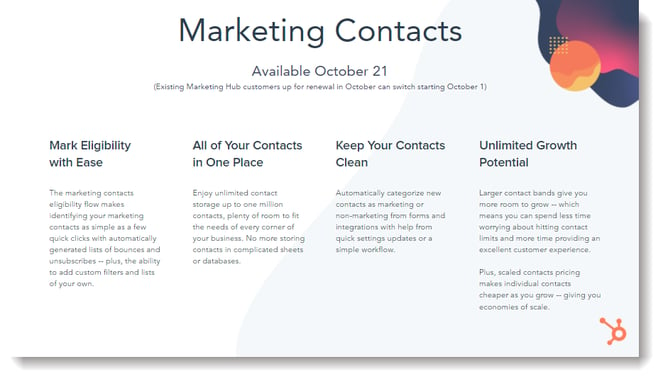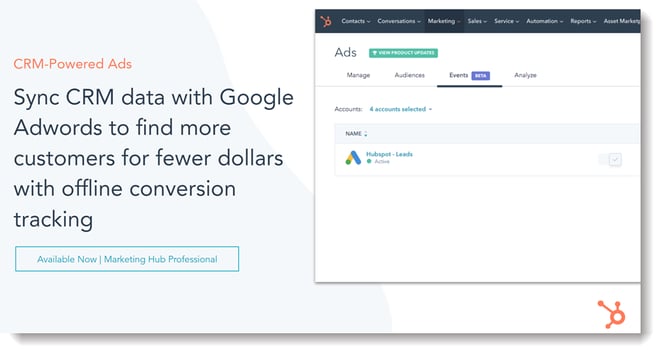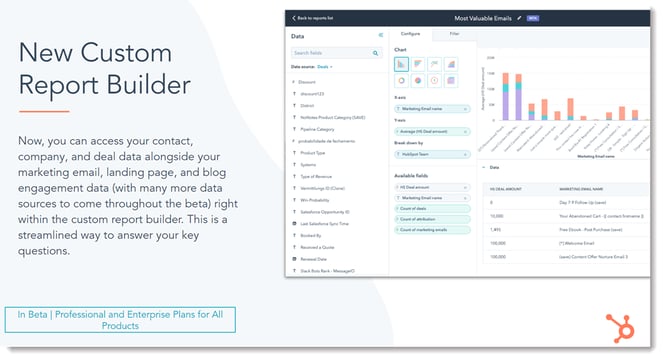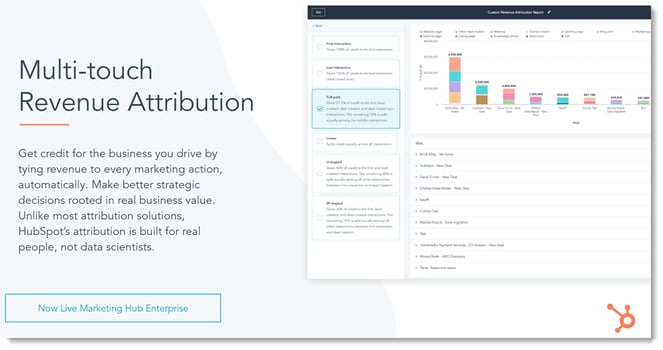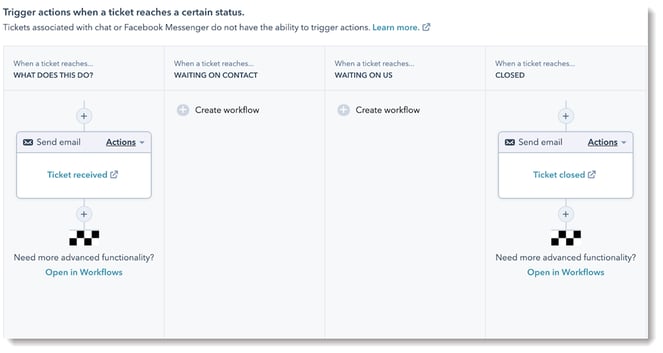9 min read
SaaS Companies Take Notice - Powerful New HubSpot Features Announced
![]() Orange Marketing
:
September 29, 2020
Orange Marketing
:
September 29, 2020
Inbound time is always exciting for HubSpot agencies like Orange Marketing. Just like other SaaS companies, HubSpot releases many of its features throughout the year, and then “bundles” them into announcements at big events like Inbound. Even if we’re familiar with some of the announcements, the new features are something we look forward to, and there are certainly always surprises!!
Here’s the complete list from the horse’s mouth, for those of you who want to crawl through it all!
What is important to SaaS?
To help out our SaaS Startup audience, we’ve boiled down the features we are most excited about. Some of these features are in the “Enterprise” edition, which up until now, we’ve not steered many startups to. At last, we may have reached a tipping point there. Good news for those of you who are on the HubSpot for Startups program, your 90% or 50% discount still applies to an Enterprise Upgrade.
Read on for our top new features in each Hub - in no particular order.
The Big Kahunas!
Custom Objects
Clearly the biggest announcement in a while, Custom Objects is a way to manage, associate and track anything at all in relationship to each other or to the standard HubSpot objects. It allows you to create your own applications for managing your business or customers. This is a straight shot over the bow of Salesforce who has had this capability for quite some time.
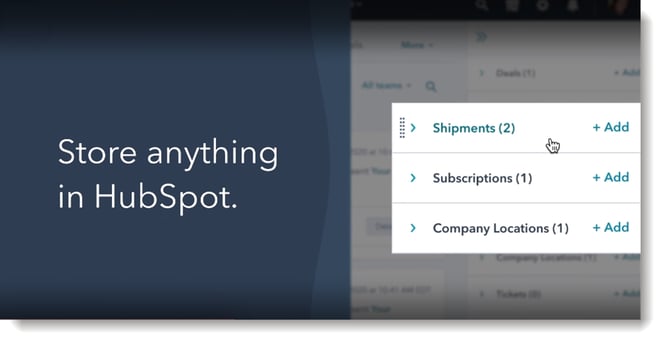
There are a lot of use cases for this. For example, if you’re a software company that manages IOT devices, you could actually manage those devices in HubSpot. You’d create an object for the devices and their attributes (eg; serial number, operating system, location, whatever,) using the API.
Then you would be able to see and report on them in the UI. The attributes are also usable as tokens for email, so you could create customized emails with updates on the machine, like the date it needs service, or that it needs some firmware update, and leverage HubSpot’s automation to do so.
The current limitations include that the custom object needs to be created via the API. Stay tuned, we know there will be a LOT more to come here!
Marketing Contacts
Lo and behold, a pricing model that is a base plus “marketing contacts.” These contacts are ones that you are emailing, advertising to, etc. We hoped this would happen sometime, because the old HubSpot contact-based pricing model was getting prohibitive. We ourselves have clients that have separate HubSpot portals or excel spreadsheets holding onto contacts they don’t want to pay for.
There are a few words of caution we’re going to explore before we barrel forwards.
- The contacts are sold in pretty big buckets. We’re trying to figure out where the breakeven of cost vs. hassle is.
- Hassle. There are a number of places in the UI where you will make decisions about whether to add or remove contacts to your marketing contacts. If you have a distributed team, you will have to create more roles and permissions to manage this to keep it from getting out of hand.
- The buckets can change month by month. Timing for going up a tier varies from going down a tier. This means your HubSpot bill could be different month to month and that may give your CFO a heart attack.
All in all this is obviously a very positive and power-play move, especially for companies with integrations to their core customer platforms or other CRMs with large numbers of sales contacts. This is going live later in October, and we’ll continue to update you as we figure out the best applications for this new pricing model.
Marketing
New workflow steps
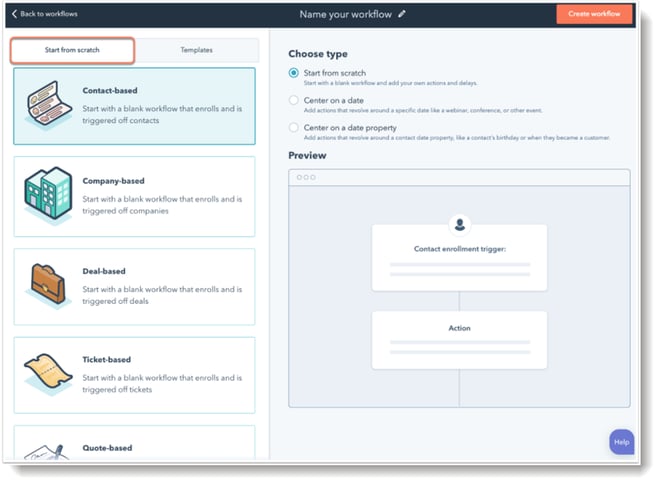 Workflows are always the powerhouse of HubSpot. But HubSpot added a few cool nuances that will be useful to most everyone.
Workflows are always the powerhouse of HubSpot. But HubSpot added a few cool nuances that will be useful to most everyone.
“Go to” - They’re calling this “connect workflow.” What it does is allow you to skip to another part of an existing workflow. Great use case: you have a bunch of “if/then” statements to assign the sales rep for a contact, but then you want that contact to be set to a specific lead status and receive an email. At the end of each lead assignment, you can then point each one to the area where the lead status and email are sent. Previously you’d have to repeat those actions for each branch of your workflow. Very handy time saver.
“Wait until” AKA Advanced Delays - This feature allows you to set delays to be more context-specific.
The previous work around was to use a combination of “delay for” (eg; 7 days) and then the workflow settings feature to make the “specific times” be something like Monday through Friday. This would allow you to delay sending an email to the following Monday morning should an event happen over the weekend.
Now, you can delay until a specific day of the week, and/or time of day, regardless of the time of the enrollment trigger. This would be handy if you wanted to send certain email only on Tuesdays, or if there was some kind of batch processing you wanted to do every Friday or something.
Another important workflow addition is “delay until event happens.” This one may be even more powerful. Previously, you’d have to create some crazy date-based thing that looked to see if something HAD happened, and then trigger the action. Now, you can set an action to happen WHEN something else happens. The example they give is to send an email after someone has visited a landing page. That’s a good one. But you could also trigger a phone call if someone had opened an email but not clicked for something important. You can put a limit on the delay, or not. Very cool stuff.
Lastly (but not least for sure), comments and export for workflows. There is now a place for a description of a given workflow, and threaded comments for each step. This is an EXCELLENT way to document wtf you did and why. The export function only allows you to export a pdf image, but we recommend this for snapshotting your workflows in case you ever need to go back to them (imagine that).
Optimize Ads
One of our favorite things is to use paid advertising to boost growth efforts. But it is expensive and therefore risky. Our team has been manually optimizing campaigns for the ads, audiences and programs that convert, but now we can better take advantage of the ad platforms’ capabilities of automatic optimization.
Ad platforms have had “offline conversion” event optimization for a long time. You could for example load a list of customers that had been created from Google Ads and Google would try to optimize for more that looked like that. But now, you can tie DIRECTLY into HubSpot and optimize down the funnel for MQL, SQL, Opportunities or Customers right out of the box. For those of you with decent volumes, this is a game changer and a definite reason to use your HubSpot Ads features.
There’s currently support for Google and Facebook ads/audiences. We’re sure LinkedIn will be near term. The LinkedIn audience match feature for ABM is very good, strongly recommended. Last note here while we’re mentioning ads and ABM. We’re big fans of the HubSpot/Adroll integration. We use it to push various ads to different audiences as they move down the funnel. But we couldn’t, until now, get much data about who saw, clicked, or did anything with the ads. With ABM targeted lists, Adroll/RollWorks DOES support some reporting. Pretty cool for those who use targeted accounts, or maybe you want to just name some targeted accounts to use this feature!
Custom Report Builder
At last! Holy cow this was a long time getting here. Now you can better report across more than two objects! Now this is still more like a pivot table creator with some filters, but that’s still a mondo improvement. You can build it live just like in Excel so you can see what you want to change.
Some ideas here:
- Email opens and clicks by segment
- Number of tasks and activities by won/loss and contact role
- Deal size by employee or revenue size of the company
- NPS by number of sales activities (eg; does a longer sales process affect satisfaction?)
You can also do a Salesforce.com style of filter rules. This is a nested if/then statement, like IF ((1 and 3) OR 2). This is a pretty big improvement of the AND/OR statements.
Revenue Attribution Reporting
Marketing or Sales Hub Enterprise alert!
This is one of those things we talk and talk about with clients. If you’re a fan of the long standing GA attribution models you will love this. It’s basically the same ones, but it uses the HubSpot contact and lifecycle stage events as the inflection points out of the box.
If you’ve adhered to our recommendations of using contact management with lead status and Lifecycle stage advancement, never moving back in lifecycles, this will work beautifully for you out of the box.
Now, whether or not you NEED this kind of attribution modeling is a horse of a different color. Remember that you really should use attribution models as more than cocktail trivia. The word to the wise is don’t throw the baby out with the bath water. You will find if you use these models that things like your own blog are not major DRIVERS of those inflection points, but that doesn’t mean you should stop doing them. Call us if you want a gigantic lecture on this. Including finger-wagging.
Sales Hub
Sales Analytics and Forecasting
 The reports you’ve been asking for, all in one place! This is a combination of some existing reports and some super great new ones, but now they have their own home. For a sales manager this is a pretty great move. The new reports that we’ve been hearing the screaming for that are now live include:
The reports you’ve been asking for, all in one place! This is a combination of some existing reports and some super great new ones, but now they have their own home. For a sales manager this is a pretty great move. The new reports that we’ve been hearing the screaming for that are now live include:
- Lead response time (disclaimer: it’s an average, and it includes nights and weekends. Good for comparing but not for exact time)
- Which deals have changed during the last x time period
- Pipeline waterfall (before and after including close date and amount changes plus wins and losses)
- Snapshots over time
- Deal velocity by rep
- Revenue by source
- And many more
Sequence Enhancements
We love us some Sequences. There are two new actions you can add that are out of the box. These have been live for a while, but it you aren’t using them yet, we recommend giving them a try.
Linkedin Sales Navigator integration for Sequences - If you have a LinkedIn Sales Navigator subscription, you can trigger connection requests and InMail emails without leaving HubSpot.
Personalized Email Task - Sometimes a template is just not going to work. If you have situations during your sales outreach process that you want the rep to start from scratch, you can create a task to send an email. The sequence will pause until it’s done.
CPQ Enhancements
The products and quotes feature in Sales Hub has been around for a while but it was pretty basic. These new enhancements increase integration with external tools like accounting platforms (Xero, NetSuite, Quickbooks support), and allow you to improve the look and feel of the proposals you generate and send for e-signature.
This looks to be a move to eliminate the need for a PandaDoc or Docusign and will allow you to create a true end to end process. Very promising for many of our clients.
Enhancement to ABM tools
The ABM suite was announced last year. If you have target accounts, the dashboard is really nice to see how things are progressing (or not in some cases!!!) and the buying role helps push reps to really build out their account profile. This year brought some nice enhancements.
ABM Workflow Support - The use case described is one that makes a lot of sense - to assign “tier” of account by size, location, industry etc.
LinkedIn Target Account Ad Audience - Mentioned above, it’s quite slick to be able to connect your target accounts directly to your LinkedIn Ads. As your target accounts change, and they do, this will keep your ads up to date.
New ABM reports for dashboards - Again, if you’re using Target Accounts, you want to see what is happening. The new out of the box reports are a very nice overview.
Service Hub
Ticket Workflows
Ticket workflows were pretty basic, but now they have come the way of the rest of the workflows. You can automate a lot, including sending internal and external notifications for tickets opened and closed, stage and status changes, and a lot more.
Jira Integration
Ah, Atlassian, finally we meet in a way that doesn’t make us want to kill you :) Jira is a very powerful project management tool for software companies. So many of our clients use Jira for their ticketing system, and in some cases onboarding and support. Now we can connect Jira so you can see or create related issues right in HubSpot.
Custom Surveys
Enterprise Alert!
YAY! Now we can create real surveys that have email and in-app support. Previously, we were stuck with either a very inflexible NPS or customer sat score. Boring…. So people were left with Survey Monkey or other survey software that they needed to integrate. You still may want to do that in some cases but if you do a lot of customer satisfaction, or product surveys, this is a good alternative.
In-App Chat
Is this an Intercom killer? Probably not, but if you’re going all-in on the platform you can DEFINITELY use this to keep a true 360 view of the customer.
CMS
The HubSpot CMS Hub basically relaunched earlier this year. You can see a lot about it in some of our recent blog posts. Great stuff already, and improvements happen every day. It’s really possible to build a beautiful, responsive, custom site in a short period. Or take shortcuts and use Themes from the Marketplace to get you going.
A couple of updates worth mentioning.
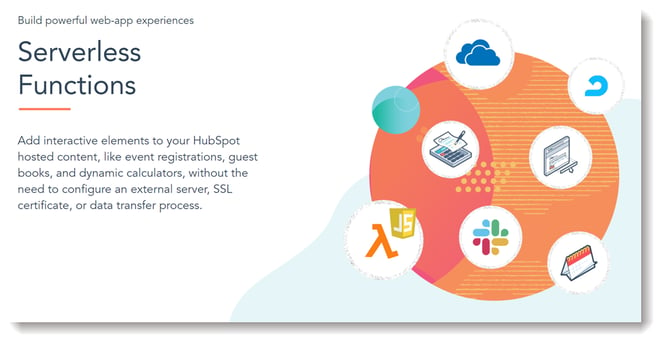
Serverless functions
Again, these were released in the spring, but there was enhanced support announced. Now you can really create your own web apps.
New SEO recommendations
With the new recommendations, you’ll get similar suggestions as you would get in something like Yoast. Mostly related to meta descriptions, page titles, index/no index, and tags. This doesn’t replace more robust tools, but it will certainly help you out if you’re at the basic level.
Other notable
- Custom HTML for blog posts - can be used if you want to display a certain way for snippets, etc. You can also display a different blog post title on your blog than the one the search engines see.
- Marketing Events App - coordinate your online and offline events.
- Free Landing Page builder - what!?? Where has this been all my life!
OK! Phew that is a lot. And that’s only about a quarter of the total. If you’re a client and you don’t see one of these features in your portal, let us know. Some of you already have them as we’ve been familiarizing ourselves. If you’re not a client and you want to know more about these, we’d be happy to show you more, or you can contact HubSpot directly!
Thanks for reading and happy HubSpotting! —And reach out to us if you want a HubSpot partner to help get you going on these powerful new features.
Additional Resources:
SaaS Medical Startup's Website Makeover Doubles Traffic and Leads
Case Study: From HubSpot to Hot Spot
Eight Reasons to Build Your Website on HubSpot CMS
How to Migrate Websites to Hubspot's CMS

